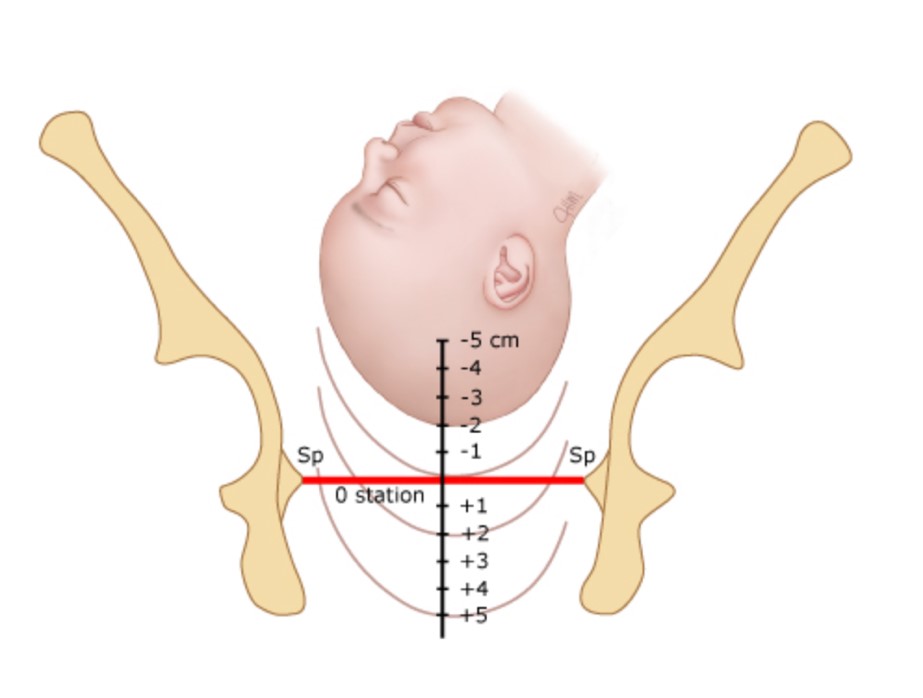Click here to take the pre-test BEFORE you begin reading this lab.
Be sure to input your email address and your 4-digit JABSOM ID on the Google form.
When finished, please be sure to click SEND on the Google form.
Ms. Osteo is a 28 yo G1P0 at 39w0d by LMP consistent with 8-week ultrasound who was admitted for early labor. She progressed to complete cervical dilation and the fetal head is at 0 station and direct occiput posterior. She then begins to push.
The fetal station refers to the location of the presenting portion of the fetus in the pelvis. The fetal station ranges from -5 to +5. “0 station” refers to the fetal head at the ischial spines. -5 station means the fetal head is 5 cm above the ischial spines, while +5 station means the fetal head is 5 cm below the ischial spines or “crowning”.
